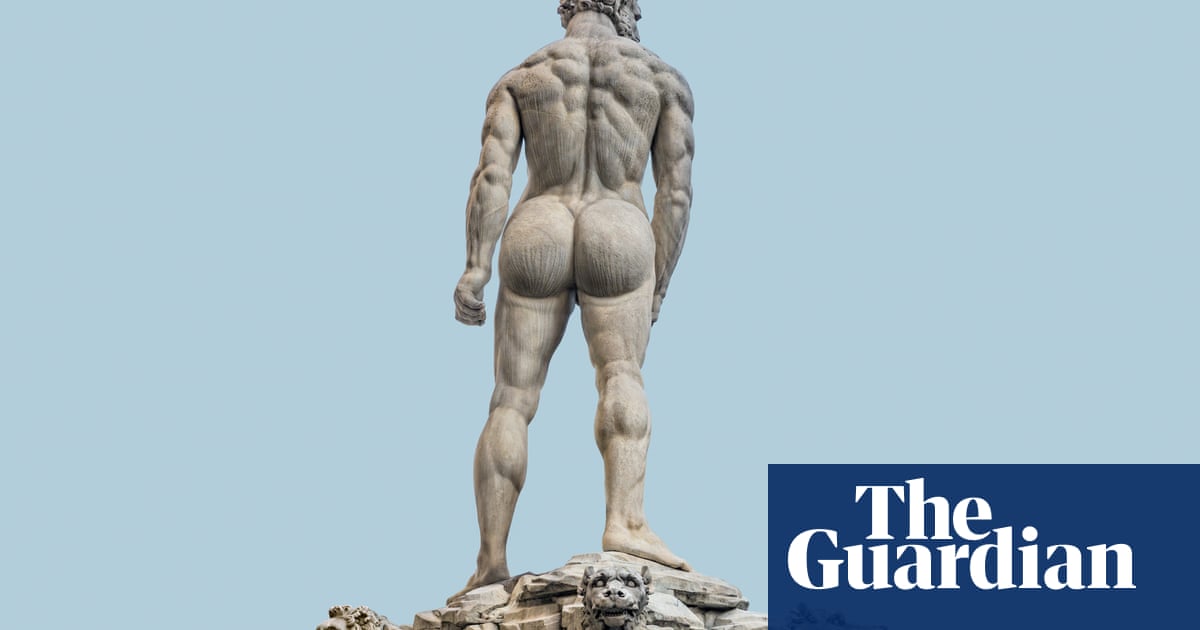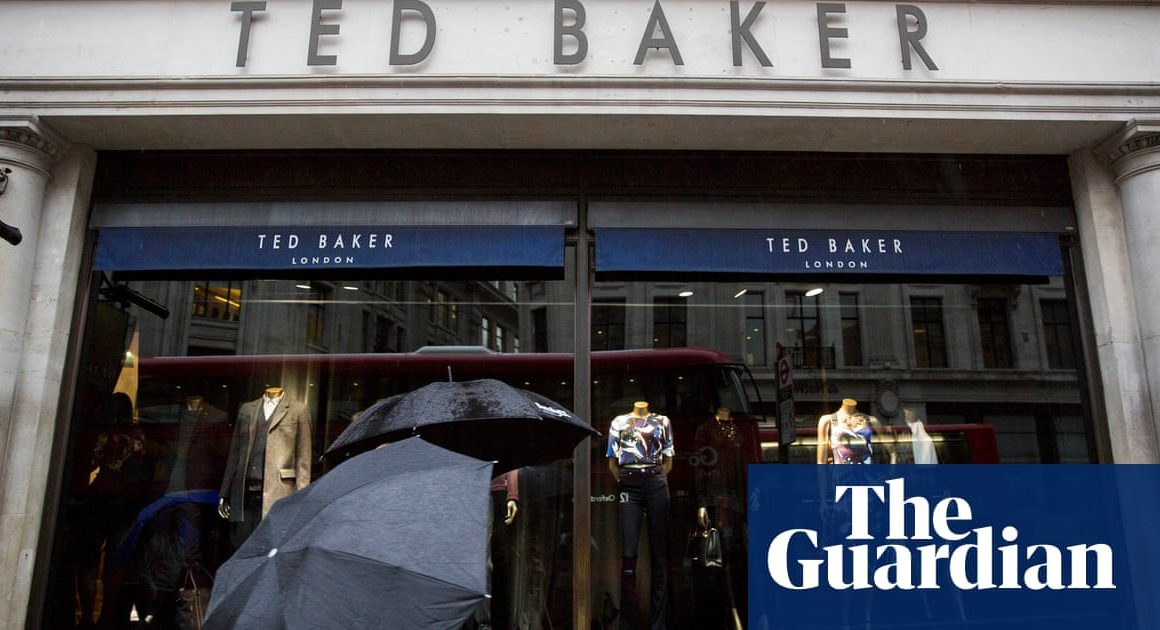In a nation divided by politics, culture wars and the appropriate way to eat a scone, it seems that there is one thing we can all agree on: we like big butts and we cannot lie. In this (and every) regard, Kim Kardashian has a lot to answer for. The 2007 pilot of her reality show Keeping Up with the Kardashians began with her momager Kris Jenner discussing her âjunk in the trunkâ, and Kardashianâs ginormous bottom was hefty enough to âbreak the internetâ after its official unveiling on the cover of Paper magazine in 2014. Her exaggerated hourglass silhouette changed the shape of the âidealâ womanâs body; a decade later, buttock augmentations are the fastest-growing procedure worldwide, with the International Society of Aesthetic Plastic Surgery reporting a 137% increase since 2018.
Now men are getting in on the act. Fitness bible Menâs Health recently reported that âmen are building their booties â and reaping the benefitsâ, while the Daily Mail was typically restrained, trumpeting that: âThe 2024 fitness trend for men will be gigantic BUTTS.â Meanwhile, fashion and fitness retailers from Lululemon to Kardashianâs own brand, Skims, are scrabbling to corner the market in glute-hugging menswear. According to Ashley Wilson, head of brand at the bestselling gymwear business Gymshark: âWe have noticed that menâs glutes are getting more attention in the gym, and have recently created products to meet the demand to accentuate this area.â A spokesperson for Spanx, which relaunched its menâs shapewear line in 2018, tells me that its Ultra Sculpt fit (which promises a perkier bum) is increasingly popular.
Nick Finney is a personal trainer whose clients have included 1999 Rear of the Year winner Robbie Williams, and Jennifer Lopez, whose buttocks were once described by Vanity Fair as âin and of themselves, a cultural iconâ. While his female clients have sought to maximise their glutes since the late noughties, recently he has âdefinitely noticed a shiftâ towards men prioritising their butts. âFor years, the most requested physique was Brad Pitt in Fight Club â male clients were obsessed with having abs,â he says. âThese days, he would be considered too skinny; your average guy in Gymbox looks better than him. Increasingly men want a stronger build, like Channing Tatum, and are concentrating on developing their butts as a âshowpiece muscleâ.â
What does he attribute this change to? âPerhaps men have clocked on to the fact that women care more about a nice bum than a six-pack, or have realised that you donât see your abs in clothes, but you do see a good butt.â Finney suggests that developments in sports science have also driven the trend. âWeâve realised that our glutes are our powerhouse. They are our fundamental driver of explosive movement â thatâs why rugby players, footballers and sprinters have big butts. Even punches are driven by the hip and glutes. In the past, Muhammad Ali was not training his glutes, but if you watch Anthony Joshua warm up, heâll be shadow boxing with a resistance band to engage that area.â
Heather Radke is the author of Butts: A Backstory, a cultural history tracking the evolution of our attitudes towards our backsides. âSince releasing the book, Iâve been surprised by how many men tell me that they have complicated relationships with their butts, that they feel they have a flat bum and canât fill out a pair of pants, or feel overweight,â she says. Radke believes that their distress is compounded by the fact that âitâs common for women to talk frankly about how they feel about their figures, whereas men have a sense of shame about feeling bad about their bodies, or thinking about their bodies at allâ.
According to Radke, the recent fashion towards big butts has been accelerated by Instagram â âPartly because itâs the most sexual part of your body that you can show without violating their guidelines. Women canât show their breasts, but they can take a belfie [a butt selfie].â What could have caused this trend â started by female influencers and celebrities â to be adopted by increasing numbers of men? âFor the last 10 or 15 years, women have wanted big butts as a sign of hyper femininity,â Radke says. âPerhaps as gender fluidity has become more normative, itâs seen as less transgressive for a man to want something previously associated with femininity: for their butt to look good in a pair of jeans.â
Finney agrees that gendered stigma around men taking pride in their butts is decreasing. âTwenty years ago, there were bodybuilders who wouldnât train their lower half at all,â he says. âUntil relatively recently, men would be embarrassed to be seen doing glute strengthening exercises like hip-thrusters â it was considered effeminate. Over time, thatâs evolved.â
High-end gym chain Equinox has capitalised on the trend by launching a dedicated Best Butt Ever workout, which it reports is increasingly popular with male members. This memo has yet to reach their Kensington branch, where I am the only man attending a class â although our instructor, Natalie, tells me that her clientele tends to skew more female than Equinoxâs other London locations. Natalie is 5ft 2in of pure marble. If anyone can make me bootylicious, it is her.
We begin with a warmup featuring high knees, butt kicks and squats soundtracked by Destinyâs Child (âMove your body up and down / Make your booty touch the ground / I canât help but wonder why / Is my vibe too vibealacious for you, babe?â) and our old friend J-Lo (âBig, big booty, what you got? / A big booty (work) / Big, big booty, what you got? / A big booty (shake that) / Big, big booty, what you got? / A big booty (go to work)â). Between wheezes, it occurs to me that we wonât have reached true gender parity until JayâZ has a song dedicated to his own mesmerising bum cheeks.
Phase two involves placing big elastic bands around our ankles before doing a variety of lunges, side steps and pulses. This feels a bit like doing a succession of sumo squats with your pants around your ankles, only â in my case â marginally less dignified. Next, we crouch down and place a slider (slippy disk of material) under one foot before gliding it diagonally across the floor behind us like an ice skater (Natalie) or Bambi on ice (me).
By the end of this section, my life is flashing before my eyes (lots of emails hoping, and failing, to âfind me wellâ), but there is no time for existential despair. The third phase includes squatting, lunging and hip thrusting with dumbbells. Afterwards, Natalie thinks it would be a nice idea for us to do some jumping lunges and about 60m floor-tap squats. âThis class might have a frivolous name, but itâs no joke,â she announces cheerily, as I glance in the mirror and catch sight of someone who looks a bit like me if Iâd been melted. After the class, I ask Natalie whether she has noticed an increase in men focusing their training on their bums? âYes,â she says. âAs well as Best Butt Ever classes, I teach pilates and barre, both of which focus on the glutes, and Iâm seeing more and more men come to those classes.â
Still, not everyone is achieving a shelf butt through exercise alone. Dr Tijion Esho is a cosmetic doctor who has seen a startling rise in men seeking buttock augmentations through implants, filler injections or fat transfer from other parts of the body. âAmong men, body treatments have risen from being in the top 20 requested procedures to the top five within the last year,â he tells me. âTreatments to the buttock and stomach area are the most popular.â He believes the rising numbers have been encouraged by âmale rappers and athletes being more open about treatments that theyâve had, as well as the millions of before and after photos on social media that show men that results can look natural. When done well, men avoid feeling âflatâ or âdeflatedâ in the buttocks. For most, itâs about achieving balance as opposed to looking like Nicki Minaj or Kim Kardashian.â
after newsletter promotion
These procedures can be dangerous. According to aesthetic doctor Brendan Khong: âButtock fillers are high risk due to the chance of embolisation and stroke if not done properly. Depending on what the male patient is looking for, quite large volumes of filler are required to make any sort of impact to the contour, which can further increase the risks. Fat grafting also carries a risk of fat necrosis [death of fatty tissue resulting in tumour-like lumps under the skin].â The most controversial procedure is the BBL (Brazilian butt lift), which involves having fat liposuctioned from other parts of the body and then injected into the bottom. Recovery is painful, and a subsidiary industry of recovery houses has sprung up, where patients can recuperate on adapted loungers with a hole cut out for the bum. Such is the risk of embolism that a July 2017 report by the Aesthetic Surgery Education and Research Foundation in Aesthetic Surgery Journal found that one to two in 6,000 BBLs resulted in death â the highest mortality rate for any cosmetic surgery. The following year, the British Association of Aesthetic Plastic Surgeons called for its members to stop performing the surgery. The procedure continues to be popular in the US, where rapper Drake is subject to endless rumours that he may have had it done; itâs widely speculated that he is the subject of Megan Thee Stallionâs lyric that men, âhate on BBLs and be walkinâ round with the same scarsâ.
While this mania for bubble butts may be relatively recent, large rear ends are as old as humankind. âWell-developed buttocks are a peculiar trait of man,â wrote the anthropologist Ashley Montagu in 1966. âNone of the other primates has anything so well developed.â In 2022, a YouTube video from the Institute of Human Anatomy explaining this discrepancy went viral (TL; DR: we need big glutes to stand upright).
The fact that Homo sapiens are distinguished by two things â big brains and big butts â is no coincidence. While the gluteus maximus makes up approximately 15% of the entire lower-body musculature, the thick layer of fat surrounding it helps fuel our superior cognitive abilities. While other apes have less than 9% body fat, a healthy range for humans is between 8% and 35%, depending on age and gender (the animal kingdom is truly not ready for our jelly).
Radkeâs research encompasses our centuries-long obsession with womenâs butts â from the way they were used to create and reinforce racial hierarchies in the 1780s, through to the 1980s craze for âbuns of steelâ. Does the fact that menâs butts are becoming similarly scrutinised represent a balancing of the scales? âI understand the impulse to think, âWomen have been oppressed by beauty standards for years, and now itâs the menâs turn,ââ she says, âbut Iâm not sure that the solution is for more people to feel bad about themselves. Then again, perhaps thereâs a freedom in more men being able to say: âI want to look a certain way and maybe I havenât always felt comfortable saying that.ââ
Finney is more positive, pointing out that there are numerous benefits to a well-developed bum. âThis is one of the first fads that is actually quite healthy,â he says. âWhen men were obsessed with getting abs, it led to undereating and doing a lot of crunches, which require a lot of rounding of the back and arenât great for your discs. Defined abs donât really serve a purpose other than looking good, whereas strong glutes have a number of health benefits. If you have bad knees, the first thing a physio will tell you is to strengthen your glutes. If you have strong glutes, it reduces back pain. Plus, training your lower half releases more growth hormone than training your upper body, so youâll see the benefit all over.â
While debate over the merits of a supersized peach rages on, at least we can definitively agree on the polite response to the question, âDoes my bum look big in this?â (Yes. Always yes).












